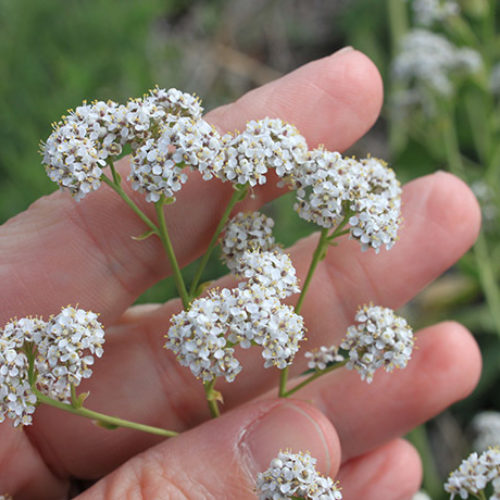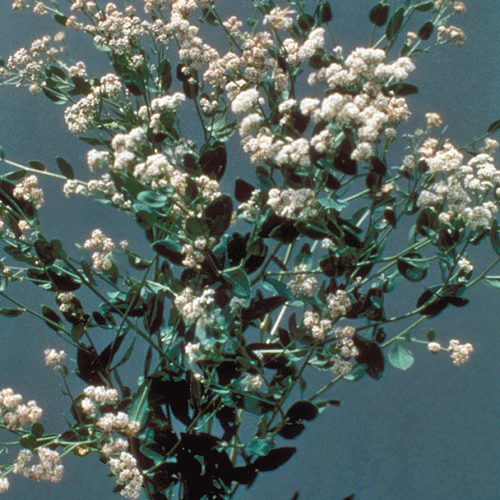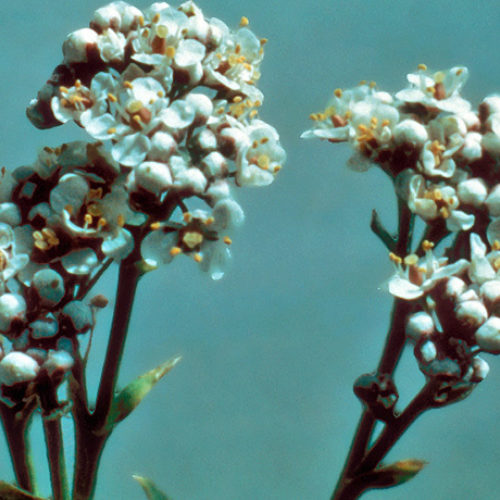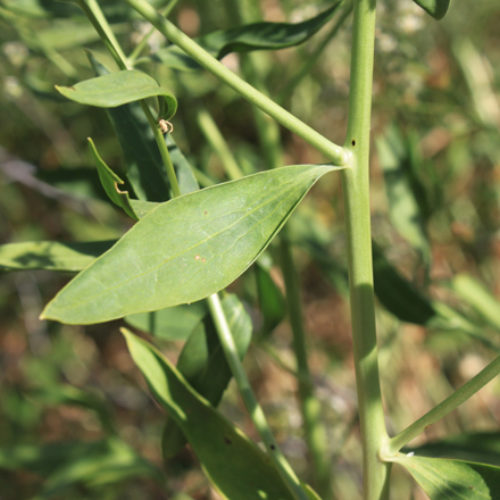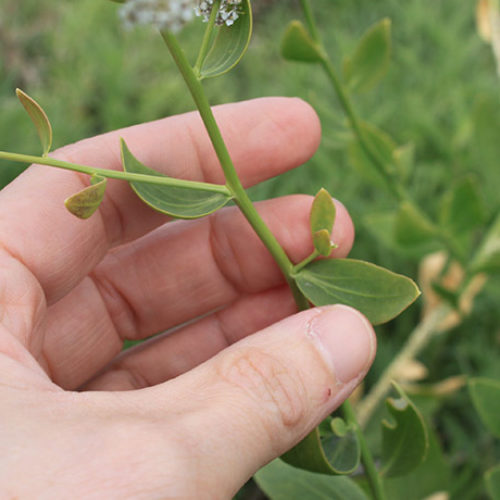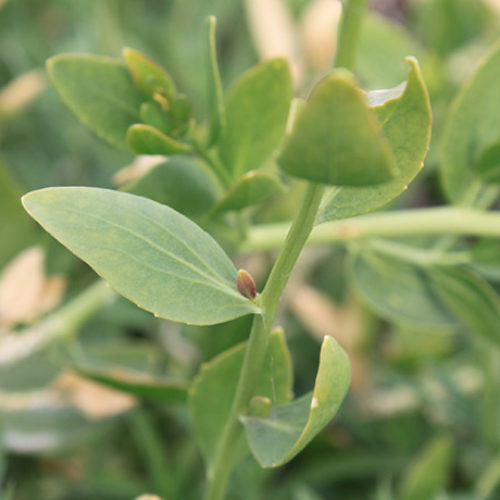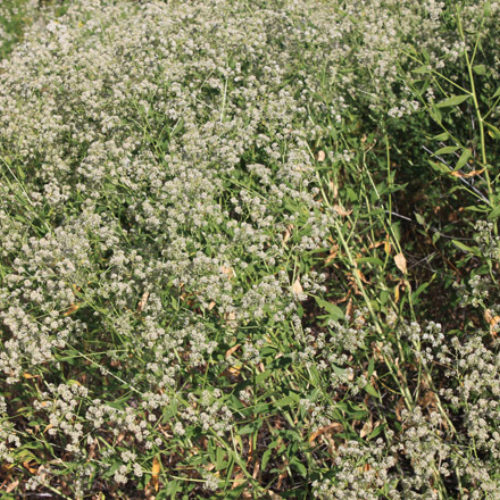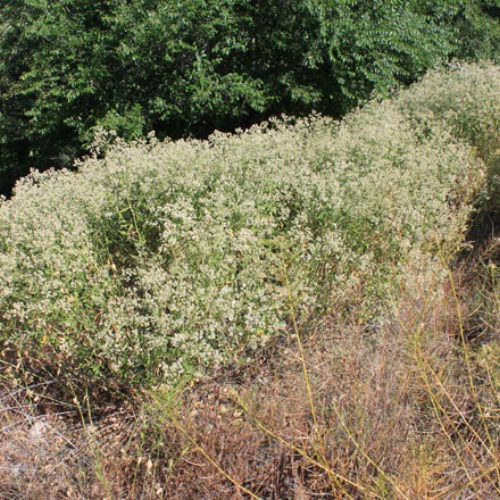Perennial Pepperweed
Lepidium latifolium
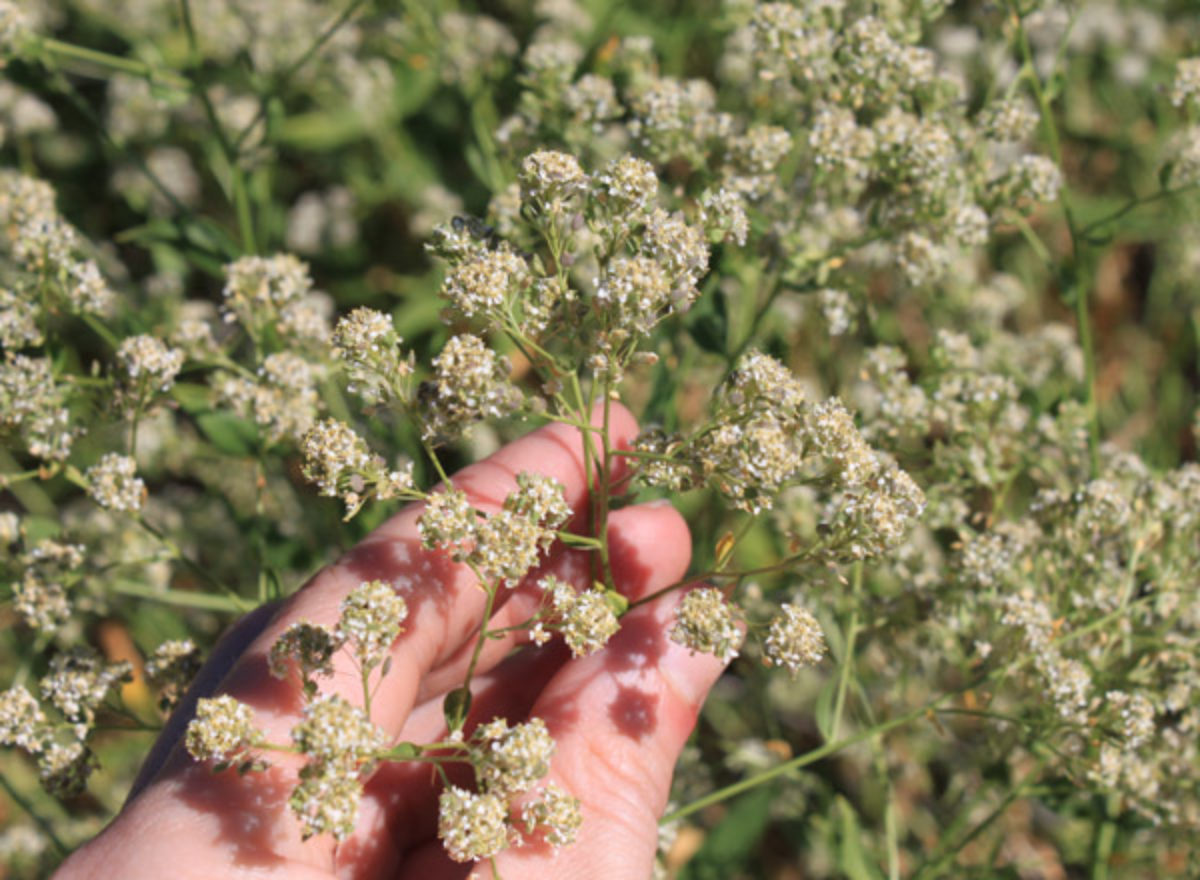
Family: Brassicaceae
Other Common Names: whitetop, perennial peppercress, broadleafed pepperweed
Weed class: B
Year Listed: 1988
Native to: Asia, Europe and Northern Africa
Is this Weed Toxic?:
not known to be
Legal listings:
WA Quarantine list, WAC 16-752
Why Is It a Noxious Weed?
It forms dense infestations that can turn into monocultures. Accumulations of its semi-woody stems degrade nesting habitat for wildlife. It can also displace more desirable species which poses a particular threat to natural areas and hay meadows.
How would I identify it?
General Description
Perennial pepperweed normally grows 1 to 3 feet tall but may reach up to 6 feet.
Flower Description
Flowers are milky white and are formed into dense rounded clusters at the branch tips. They have 4 sepals and 4 petals.
Leaf description
Leaves are alternate, waxy, and have smooth or toothed margins. They have a prominent whitish midvein.
Stem description
Multiple stems emerge from a woody base.
Fruit Seed Description
Rounded to egg-shaped silicles (seed pods) form that are compressed and 0.09 inches (2.4 mm) long. Silicles with stigma present at tip.
Where does it grow?
Perennial pepperweed may be found in a variety of places: waste areas, wet areas, ditches, roadsides, cropland and in dry habitats. In coastal areas, the plant invades brackish marshes. Please click here to see a county level distribution map of perennial pepperweed in Washington.
How Does it Reproduce?
It reproduces by seed, rhizomes and root fragments. It produces abundant seed with a high germination rate. Large populations more commonly expand by creeping rhizomes, which may advance 3 to 6 feet from the parent plant.
How Do I Control It?
Mechanical Control
Mechanical control of this plant is very difficult because very small sections of root contain buds that will sprout into new plants. Plant tops are easily killed, but root and crown buds can sprout and continue the infestation. Small infestations may be hand-pulled or dug, but as much of the root must be removed as possible.
Cultural Control
Planting competitive vegetation aids in controlling perennial pepperweed.
Biological Control
.
Herbicide Control
Please refer to the PNW Weed Management Handbook, or contact your county noxious weed coordinator.
For More Information
See our postcard for early detection information about perennial pepperweed.
See our Written Findings for more information about perennial pepperweed (Lepidium latifolium).
Thurston County NWCB Fact Sheet on perennial pepperweed
Stevens County NWCB Fact Sheet on perennial pepperweed
Whatcom County NWCB Fact Sheet on perennial pepperweed
King County NWCB Fact Sheet on perennial pepperweed
Pierce County NWCB Fact Sheet on perennial pepperweed
Lincoln County NWCB Fact Sheet on perennial pepperweed



